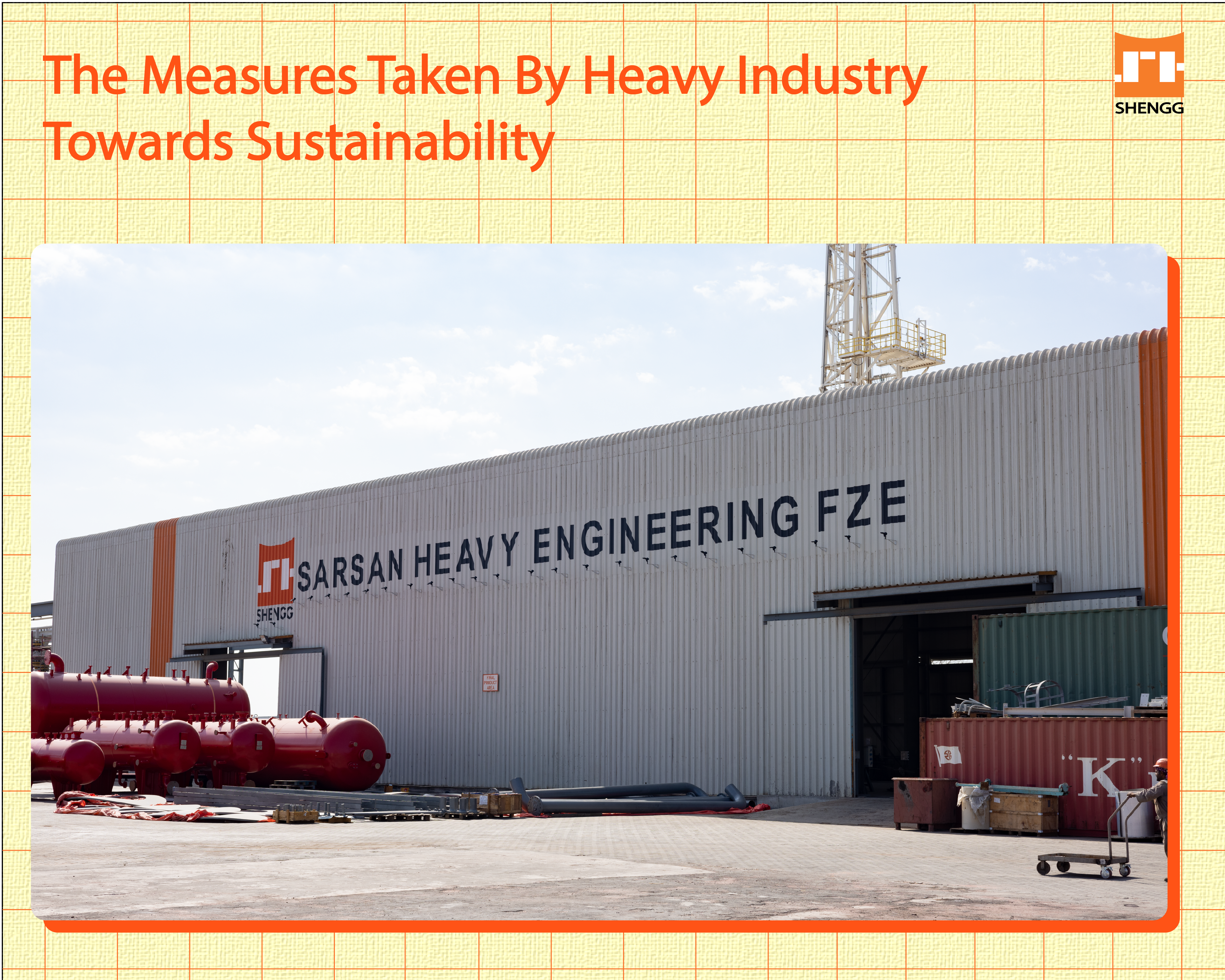
The measures taken by heavy industry towards sustainability
Sustainability is fulfilling our needs without compromising the future of resources. It impacts three major components of community- environment, economy and society. Sustainability has become a movement now. People are becoming aware of the causes of environmental degradation and rising carbon footprint. Major brands and industries are becoming a part of this movement.
Heavy industry is taking measures to be a part of this movement as well. Heavy industry is impacting the environment, economy and society in a positive way. By using sustainable raw materials, renewable fuels and safer waste management.
Let’s take a look at the measures taken by heavy industry.
Raw Materials
Innovation is becoming a norm in engineering. It happens across the stages of production and manufacturing. But innovations in raw materials have been tricky. The strength and weakness of a particular material is the reason they are chosen for manufacturing. Without the chosen materials the product is being compromised.
New generation of engineers and scientists did beat the compromising dilemma with these materials:
- Alloys: Iron and steel are being mixed with other elements, like carbon, manganese and nickel, to give the alloy new strengths. Result is carbon steel alloy. Carbon steel has taken the heavy industry by storm. It is used in building, fittings and accessories to biggest tanks and machines. These alloys don’t corrode, have better tensile strength and longer life. While being more sustainable to the environment.
- Composite materials: Composite is a combination of two or more materials of different properties. It gives the resulting material qualities of both. Carbon fiber is a great example of that. Composite material was earlier used in tanks internal lining to avoid chemicals to react to metal. But all composite tanks have better pressure handling and no danger of corrosion or reaction. Giving tanks longer life as well. Although composite tanks are yet to be mainstream.
- Reusable or engineered wood: Reusable wood, also known as engineering wood, is made from used wood, saw dust and filing. They lack the strength of timber but they can be used again and again. DIY trends and sustainability movements have pushed mega brands to use engineered wood. Now industry doesn’t have to focus on building long lasting structures but long lasting and reusable materials. Engineered wood does check that box.
- Ferrock: Similar to reusable wood, ferrock are metal bricks made from metal fillings, scraps and silica. They are sturdy and shaping them is easier. Ferrock is replacing concrete in flooring, pavements, sidewalks, etc.
- Precast concrete slab: Precast concrete slabs mimic the system of legos. They are casted in such a shape that even after deconstruction, they can be used again.
- Reusing steel and plastic: Recycling is more taxing to the environment than reusing. A lot of energy and fuel goes to recycle or remold plastic and steel. Instead of melting the metals again, industry is just reusing the materials as they were.
Modern construction has changed its approach as well. New infrastructures are designed for adaptability, disassembly and reuse. The pre-planning is done in such a way that deconstruction of structures doesn’t destroy the materials. Further those materials can be used in building other structures. Reusing these materials is not only good for the environment but for the economy as well.
Fuels
Fuel is the important element in nearly all the major manufacturing and heavy industries. Fuel itself is the reason for most greenhouse gas emissions. The compilation of all the heavy industries accounts for 20% of total emissions.
But now fuels like CNG, RNG, and H2 are chosen instead of fossil fuels. Most of the major movements have come in using better fuels or electric powered vehicles or machines.
Waste Management
Carbon emissions have increased by 5.3% in 2019 in the last assessment. Air quality is getting worse and plastic has found the deepest seabeds. Waste management has become a necessity now.
Waste management has intertwined with production of raw materials. The pollution was disbalancing the ecosystem but society has found ways to reuse that waste.
Many brands and companies took initiative to use regenerated materials for their products. All the renewed raw materials, mentioned earlier, are a product of discarded waste.
New apparatus are developed, like compressor and pneumatic controllers, to avoid the spills of methane and leakage of reservoirs. Controllers and compressors are used to limit the disposal in ocean and air as well. Power sector is reusing steels and metals instead of melting and casting as well. It is saving the industry cost in repairing the damages and taking precautions for the industrial waste.
Heavy industry has become an entity in itself. It is growing like an individual, becoming responsible and taking part in community movements. These measures are just not alternatives to the original choices, but they are better in all the aspects. Carbon alloy steel is much better than iron in strength and durability. Engineered wood is versatile and easy to shape. Employing ferrock saves a lot of time and money with better strength and durability. Processes of construction and manufacturing have become efficient as well.
Sustainable development is a long process but it is a good thing we have walked the initial steps.


